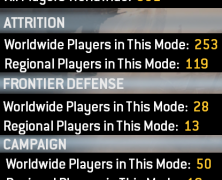In preparation for Respawn’s highly-anticipated Titanfall 2 (dropping at the end of the month), I reinstalled its predecessor last week. The last time I had played Titanfall was November 2014, according to my Origin account. The game is highly mechanical and there are a lot of advanced tactics to brush up on. Being built on the Source engine (which itself was built from iD tech/Quake engine code), you’ve got full air control and momentum conservation in the form of bunnyhopping, on top of the already-excellent wall running and double jumping. All of this is promised to return in the sequel, so I figured why not re-master these techniques to get a bigger edge on the competition in Titanfall 2. I want to make one thing perfectly clear before I dive into the meat here: Titanfall is fun. One of the most fun FPS games I have ever played, in fact – there’s an excellent blend of tactics, movement, aim and general FPS skill that doesn’t often get to shine in such a broad spectrum in other games. With so many different ways to play, it certainly ticks the box for the competitive mantra “easy to learn, hard to master.” The gameplay is beautifully sculpted in such a way that you can only come to expect from the geniuses behind Call of Duty 4: Modern Warfare (the best Call of Duty title to date, I might add). It sounds cool, it looks cool, it’s fast-paced, there’s an extremely high skill ceiling However, nearly everything else about the game is crap. The netcode certainly leaves something to be desired – hit registration is lackluster, the tick rate (the rate at which the server updates the world with new information, ie: you shot the bad guy and he...
Titanfall – The First Three Months
posted by Josh Folland
Titanfall is a first-person shooter for PC, Xbox One and Xbox 360 that released on March 11, 2014. First revealed at E3 2013, I knew Respawn Entertainment (comprised of many former Infinity Ward members who departed in the exodus during the creation of Modern Warfare 2 and creators of the highly renowned and truly fantastic Call of Duty 4: Modern Warfare) was on to something with their first game. Having waited years for an FPS title to live up to the likes of Call of Duty 4, Quake, Unreal Tournament and many other since come-and-gone games of the genre, Titanfall looked to have that spark that’s been missing for many years. I followed Titanfall closely and got into the PC beta about a day after it began. While it had some problems like flawed Origin integration, downtime (excusable due to it being a beta) and being limited to 60 FPS, I was hooked instantly. Respawn had got it right – they focused on the core gameplay experience. The movement was familiar enough to me, being a combination of Mirror’s Edge parkour-style movement as well as a basis in the traditional sprint-aim-down-sight-duck-for-cover playstyle made popular by the Call of Duty franchise. Once you score enough points and/or the timer reaches zero, you drop your Titan and can climb inside or leave it free to guard or roam the map on its own. Once inside the Titan, gameplay reminded me a lot of Halo. Titans have a shield that will regenerate if you spend enough time out of combat over top of a hull that cannot be repaired, similar to the mechanics in Halo. With a team of friends, we would perform maneuvers such as the “switchout” in which one of us would change places in...


